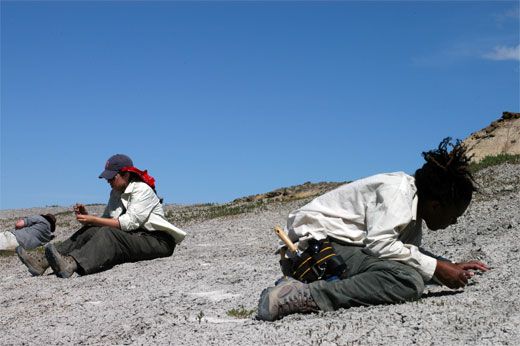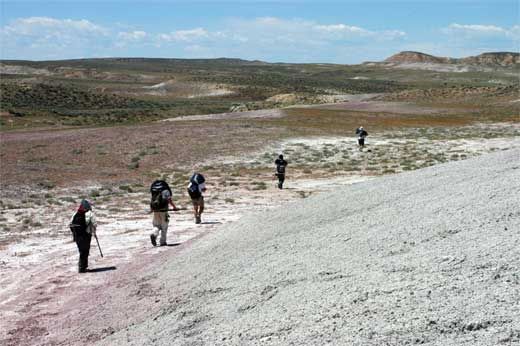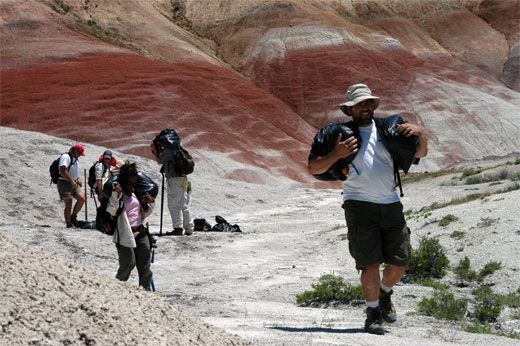Dinosaur Dispatch: Days 6, 7 and 8
The team survives the Death March dig and makes an essential stop in Thermopolis
/https://tf-cmsv2-smithsonianmag-media.s3.amazonaws.com/filer/Dispatch3_6_Marchback1-631.jpg)
One of the coolest sites we visit is also one of the most challenging to reach. It’s affectionately nicknamed “The Death March.” Before now we have been able to park reasonably close to our work sites, but the two-track, dirt road that leads to this site ends far from the outcrop. Most of the kilometer-long path to the site is barely wide enough for one person to walk comfortably, so we walk one-by-one to get there.
The trek is worth our while, as the hardest site to get to seems to be the most fruitful. Just from initial surface collecting we find several theropod teeth, including a Deinonychus tooth. We also find crocodile teeth, pieces of turtle shell, and a couple of ankylosaur teeth, among other things. The layer we dig from is very fine, with little clay in the sediment. Everything about this site is perfect -- until we are ready to leave. A one-kilometer walk isn’t so tough when we are only carrying backpacks and shovels, but when you add thirty-five pound plastic bags of sediment to the load it becomes backbreaking. Our ten-minute walk to get here takes at least twice the time coming back and feels even longer when you factor in hills, pot-holes, cowpies, and the blazing sun. “If you don’t have mules, students and interns are the next best thing,” jokes Steve Jabo.
After a solid couple of days hauling and washing sediment from “The Death March,” everyone is more than ready for a well-deserved day off. Dr. Matthew Carrano wants to do some prospecting in another area of the Big Horn Basin later in the week, so we stay for a night in a hotel in Thermopolis, the town closest to the sites he is interested in investigating. Thermopolis is famous for having the world’s largest mineral hot springs, but we don’t get to take a dip. Instead, we have a much bigger priority: laundry.
Our most important stop in Thermopolis is the Wishy Washy Washeteria. I have never been so happy to see a coin-op laundromat in my life. Although we have steady access to showers at camp, after a week and a half of sweating in the sun, our clothes smell a bit ripe. For the rest of the day we all try to stay as cool and clean as possible. “I can’t mess these pants up,” Ruth Middleton laughs, “they have to last me the next four or five days.”


